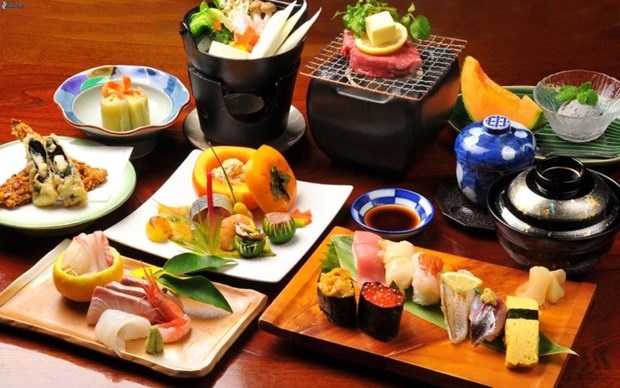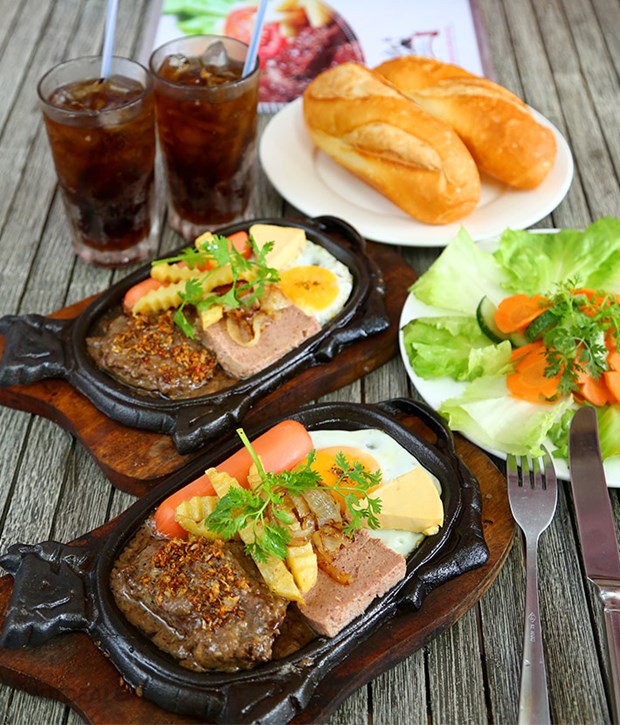Delectable and eye-catching, exotic cuisines from across the borders are growing more popular in Vietnam, especially among younger generations. This surge in popularity of international food is contributing to an increasingly dynamic and diverse Vietnamese culinary culture.
The rise of
international cuisine in Vietnam
Alongside
cultural exchange and tourism development has come the entry of foreign
cuisines to Vietnam, something that has been welcomed by many locals. The most
popular cuisines include French, Japanese, Korean, Chinese and Indian, and more
recently, Thai. Tourists can easily find international restaurants when
wandering around big cities like Hanoi, Haiphong, Danang and Ho Chi Minh City.
Both luxury and affordable restaurants serving up foreign dishes tend to
attract customers throughout the year. They offer a wide range of cuisine, from
familiar favourites like spaghetti, pizza, gimbap, spicy noodles, sushi and
steak to exotic specialties such as Hainanese chicken rice, Kakhu hotpot, Thai
noodle soup and sashimi.
In
recent years numerous international and speciality restaurants have sprung up
to meet the growing demand of Vietnamese - Italian restaurant chains like
Pepperonis, Spaghetti Box and Al Fresco’s; Chinese restaurants such as Michelin
and Crystal Jade Palace; Koreaninspired eateries like Seoul Garden, GoGi House
and King BBQ; as well as Japanese Sumo BBQ, Akaari and Sushi Bar.
The
strong presence of foreign restaurants in some districts has meant specialist
food areas have formed. These include a Korean food area in Trung Hoa and Nhan
Chinh area in Hanoi and Pham Hai in Ho Chi Minh City, Japanese food area in Kim
Ma, Linh Lang and Dao Tan in Hanoi, and Indian food area in Bamboo Street and
Pham Ngu Lao street in Ho Chi Minh City. These international restaurants are
often tastefully decorated, offering a great range of authentic dishes at
reasonable prices.
According
to Nhu Loan, owner of a Korean restaurant in Nguyen Trai street in Hanoi’s
Thanh Xuan district, the majority of her customers are Vietnamese and mainly
young. Popular dishes amongst her regulars include black bean sauce noodles,
tteokbokki, gimbap, bibimbap, bingsu and most recently spicy noodles.
In
2016, spicy noodles became a craze among the youth and hundreds of restaurants
opened up nationwide. Quynh Thu, an employee of Samsung Bac Ninh, is a Korean
food lover. She said that many of her colleagues are Korean so she often eats
out with them in nearby Korean restaurants. Despite lacking somewhat in
authentic Korean flavour, the dishes are still tasty and reasonably priced.
Thai cuisine has been growing in popularity recently. With prices starting at
VND30,000 ($1.3) per meal, customers can enjoy popular Thai dishes like sweet
soup, mango sticky rice, coconut ice-cream, rolled ice cream, Thai noodles and
tom yum.
Adapting to
Vietnamese palates
Many
of the international restaurants serve up foreign dishes adjusted to suit
Vietnamese tastes, with the food processed as little as possible to maintain
authentic flavour. “Traditional Korean dishes tend to be spicy and salty, but
when served in Vietnam, they are sweeter and less spicy,” Quynh Thu said.

Masayuki
Manabe, director of Ajichi Farm, has lived in Vietnam for 11 years. He said
that Japanese food made in Vietnam has a similarflavour to that from his
homeland because more Japanese ingredients have recently made their way into
Vietnam. Added to this, a number of Japanese restaurants have hired Japanese
chefs to prepare the dishes. However, Japanese food doesn’t come cheap in
Vietnam.

Locals
are becomingly increasingly curious about international cuisine and generally
foreign establishments have good reputations- known for having spacious dining
areas, good service and high standards of food safety and hygiene. The
increasing presence of international cuisine indicates that Vietnam is keeping
up with the global trend of international integration. Tracing back the history
of Vietnam’s culinary culture, there are many Vietnamese dishes that have
foreign origins or influences, such as bread introduced by the French at the
beginning of the 19th century, banh bao (steamed wheat flour cake) and hu tieu
(a dish made with noodles and pork) originating from China, and soup and salads
from Europe.
Back
when foreign foods were first imported to Vietnam they were adjusted to suit
Vietnamese palates and many soon earned their place amongst Vietnamese
delicacies. As a result, Vietnamese food culture has become more lively and
diverse due to a mix of food from all corners of the globe.
By Hoang Oanh/ Timout Vietnam